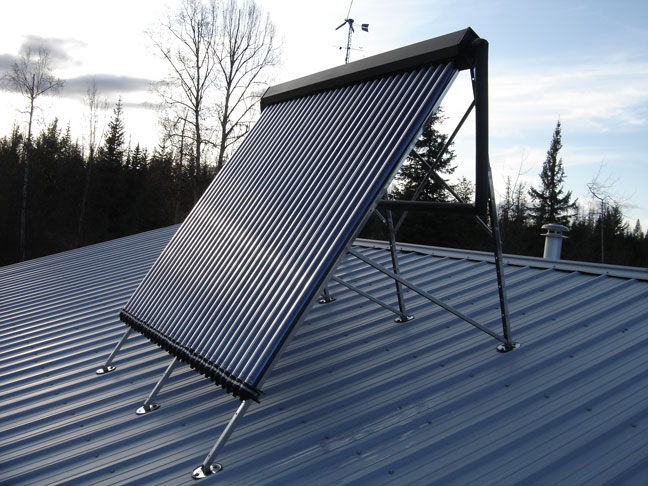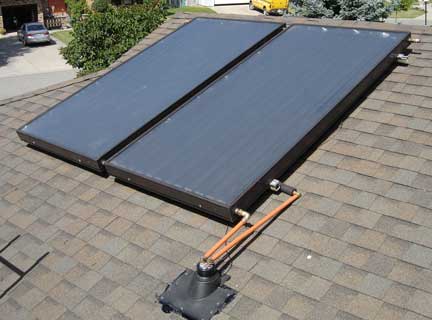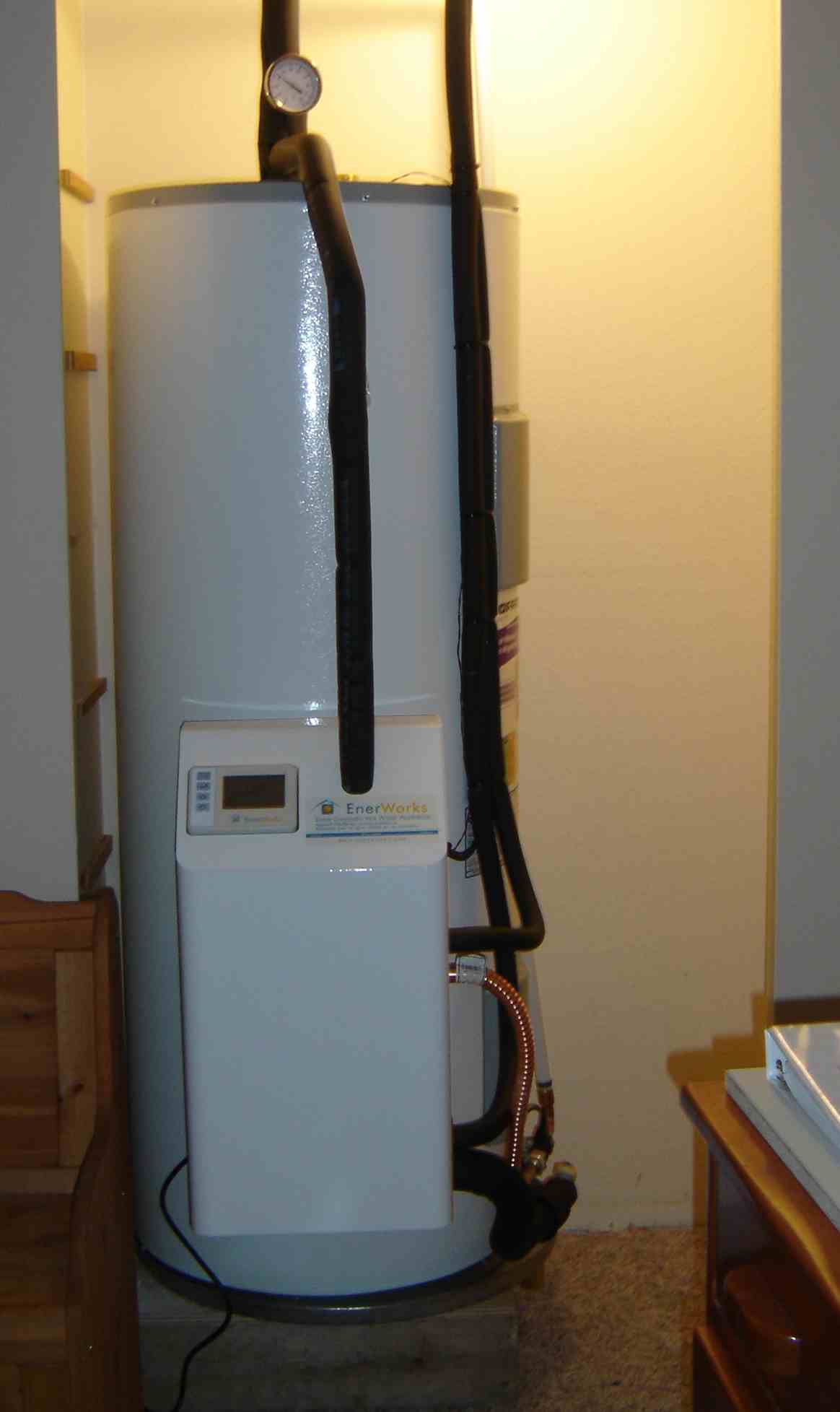
This Apricus evacuated tube solar hot water collector is located at 53.5 degrees north latitude, near Prince George, BC. The 30-tube collector is mounted on an Apricus stainless steel frame which is tilted to optimize production during winter months. This angle also reduces the output somewhat during the summer to prevent over heating. The house is not situated at the ideal angle so the collector faces a few degrees east of true south.
The steep angle helps the snow to either slide off the collector or to not stick in the first place. During the winter of 2008-2009, the first winter of operation, the area received a total of about 1.2m (4 feet) of snow but only two days of hot water production were lost due to snow on the collector.
The winter performance of this collector has far exceeded the owner's expectations. In February, there were over 3 weeks of clear cold days with overnight temperatures dipping to -35°C and daytime highs of around -20°C (zero on the antique scale) With two people in the house, and 300 liters (80 US gallons) of hot water storage, it was almost sufficient to carry over the few cloudy days in that month.Another unexpected benefit of this high mounting angle is that in the summer, late in the day when the sun is behind the collector, it shines on the back of the tubes and the collector keeps producing hot water.
2011Performance
Data
2010 Performance Data
2009
Performance Data

The collector feeds a drain-back system to preheat the water that is fed to the existing natural gas water heater.
Winter performance is almost zero but without a data logger in the system, we don't have any scientific data on its performance.

This Enerworks flat plate collector installation in the Hart Highlands subdivision of Prince George was a challenge because of the 12/12 pitch (45° angle). We had to work off ropes and scaffolds and over the skylights.
Being flat plate collectors, winter performance suffers.
Performance Data

The Enerworks package added to a standard electric hot water tank makes a nice neat installation.
Most pumping stations are designed to be mounted on the wall and can be some distance from the tank.